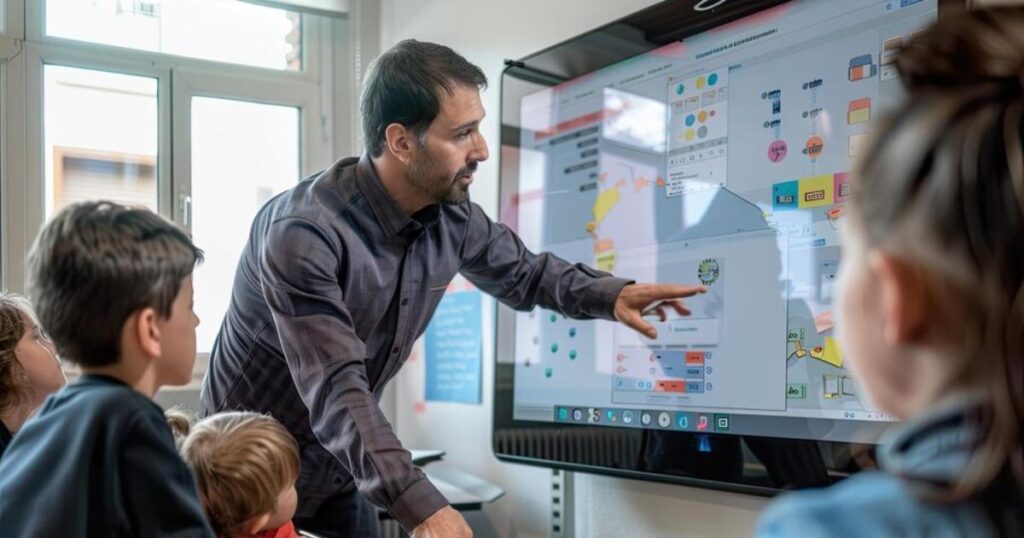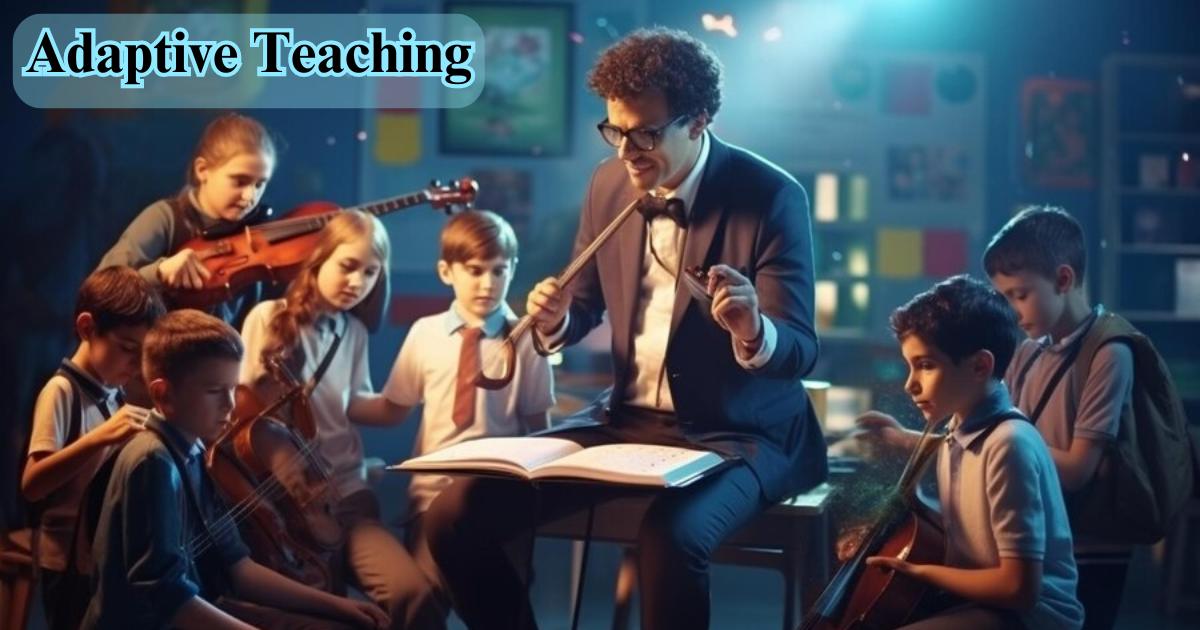Adaptive teaching is a flexible educational approach. It tailors instruction to each student’s needs. Teachers adjust their methods based on learners’ progress. This approach aims to maximize learning outcomes. It considers individual differences in learning styles and abilities and promotes personalized education for all students.
What Is Adaptive Teaching And Why Is It So necessary? Imagine a classroom where every student thrives. Picture a learning environment that adapts to each learner’s unique needs. Envision teachers who can effortlessly adjust their methods on the fly. This is the power of adaptive teaching. It’s a game-changer in education. It’s transforming how we think about learning and instruction.
Adaptive teaching is evolving rapidly in today’s educational landscape. It recognizes that each child possesses unique talents and skills. This approach stems from ancient wisdom and modern research. It empowers educators to customize their instruction. Adaptive teaching strategies promote student engagement and empowerment. They help teachers meet the diverse needs of their learners. This method ensures that every student receives the best possible education.
The Advantages Of Adaptive Teaching
Adaptive teaching isn’t just a buzzword it’s a powerful tool that can revolutionize the learning experience. Here’s why it’s making waves in education:
- Boosted Engagement: When lessons are tailored to their level and interests, students are more likely to stay engaged. No more glazed-over eyes or fidgeting hands!
- Improved Outcomes: Studies have shown that adaptive teaching can lead to significant improvements in academic performance. For instance, a 2022 study by the National Education Association found that schools implementing adaptive teaching strategies saw a 15% increase in test scores across all subjects.
- Fostered Independence: It encourages students to take ownership of their learning journey, promoting self-regulation and metacognition.
- Reduced Learning Gaps: By addressing individual needs, adaptive teaching helps level the playing field, ensuring no student falls through the cracks.
- Enhanced Teacher Effectiveness: With better insights into student progress, teachers can make more informed decisions about instruction.
The Effective Adaptive Teaching Strategies

Now that we’ve covered the ‘why‘, let’s dive into the ‘how‘. Here are some proven strategies for implementing adaptive teaching:
Flexible Seating Arrangements
Gone are the days of rigid rows of desks. Modern classrooms are embracing flexible seating options that allow students to choose where and how they learn best. This might include standing desks, bean bags, or even outdoor learning spaces.
Technology-Enhanced Learning
Adaptive learning software can provide personalized learning paths based on student performance. Tools like DreamBox for math or Lexia for reading can adjust difficulty levels in real-time, ensuring students are always in their ‘zone of proximal development’.
Project-Based Learning
By allowing students to explore topics through hands-on projects, teachers can cater to different learning styles and interests. For example, a history unit on the Civil War might allow students to choose between creating a documentary, writing a series of letters from a soldier’s perspective, or designing a board game based on key battles.
Formative Assessment and Feedback Loops
Regular check-ins and assessments help teachers gauge understanding and adjust instruction accordingly. This could be as simple as exit tickets at the end of each lesson or as comprehensive as adaptive quizzes that change based on student responses.
| Assessment Type | Frequency | Purpose |
| Exit Tickets | Daily | Quick check for understanding |
| Adaptive Quizzes | Weekly | Detailed progress monitoring |
| Project Milestones | Bi-weekly | Assess application of skills |
| Peer Evaluations | Monthly | Encourage reflection and collaboration |
Multisensory Instruction
By presenting information through multiple senses, teachers can cater to diverse learning preferences. This might involve using manipulatives in math, incorporating movement in language lessons, or using visual aids in science.
The Challenges You Might Face In Adaptive Learning
While the benefits of adaptive teaching are clear, implementation isn’t without its hurdles:
- Time Constraints: Designing personalized learning experiences for each student can be time-consuming. Teachers need support and resources to make this sustainable.
- Technology Integration: While tech can be a powerful tool, it requires investment in both hardware and teacher training.
- Assessment Complexities: Traditional standardized tests may not fully capture the progress made through adaptive learning approaches.
- Balancing Individual and Group Needs: Finding the sweet spot between personalization and collaborative learning can be tricky.
- Equity Concerns: Ensuring all students have equal access to adaptive learning resources, especially in under-resourced schools, is a significant challenge.
Read More:
AppleMiller and 9to5Mac: Leading the Charge in Apple Reporting
Why Adaptive Teaching Is So Significant?
As education expert Dr. Carol Ann Tomlinson puts it, “Excellence in teaching is about reaching students where they are rather than where we would have them be.” In our rapidly changing world, adaptive teaching isn’t just beneficial it’s necessary. Here’s why:
- Preparation for the Future: The jobs of tomorrow require adaptability and critical thinking. Adaptive teaching nurtures these skills from an early age.
- Inclusivity: By catering to diverse learning needs, it creates more inclusive classrooms where every student can thrive.
- Lifelong Learning: By teaching students how to learn, not just what to learn, adaptive teaching sets the stage for lifelong learning.
- Data-Driven Decisions: Adaptive teaching provides rich data that can inform educational policy and resource allocation.
- Teacher Empowerment: With better insights and tools, teachers can make more impactful instructional decisions.
Final Thoughts
Adaptive teaching isn’t just a trend, it’s a necessary evolution in education. By embracing this approach, we can create learning environments that truly serve every student, preparing them not just for tests, but for life.
The journey to fully implementing adaptive teaching may be challenging, but the potential rewards for students, teachers, and society at large make it a path worth taking.

I am a web content writer with 4 years of experience. I share insights and expertise on various topics through my personal blog, “haadizone.com,” covering a wide range of global content.

